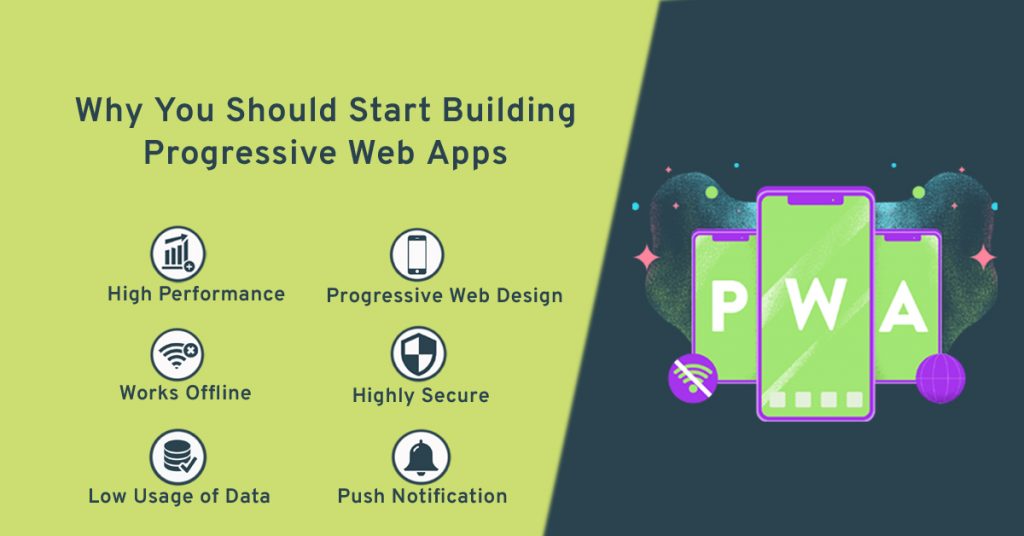
Progressive Web App (PWA) is a browser-based web application created using the latest web technologies to deliver a native app-like experience to users on any device or channel—mobile, desktop, or the web.
Itis an amalgamation of all the best features of websites and native apps. Due to its dynamic capabilities, it has made online experience easier. Almost everyone has Internet access in his or her mobiles now. When websites could not deliver the desired user experience, apps were created to give a richer experience.
Before we dive into what makes PWAs the ultimate choice, let’s compare them to native apps.
Progressive Web Apps vs. Native Apps
Native apps provide an abundance of advantages to user but there are some vulner abilities that PWAs try to overcome.
Download Size
Downloading native app consumes a lot of memory space and users these days with dozens of apps on their devices are quite thoughtful when it comes to downloading another native app.
PWAs that offer native app-like experience are light on size and easily installable on the mobile.
Cost
In the case of native apps, you need to develop and maintain separate apps for Android and iOS, which is pretty expensive.
In PWAs, you do not have to develop separate apps for different platforms. They use web technology advancements to offer a native app-like experience on all devices regardless of browsers.
Load Times
PWAs are inherently fast. Due to their small size, they are installed easily. They can be started extremely fast even in the absence of a network because they use cache data.
Benefits of PWA
Responsive – PWAs can fit any device and with new technologies to come, they respond quickly to user interactions, such as scrolling or animation, seamlessly.
Fast – PWAs are lighter apps, allowing them to load fast while still providing the quality and functionality needed, no matter the network speed or connection.
Affordable– Building a PWA can reduce overhead for businesses by allowing them to write one App and deploy it anywhere. This is because PWAs work on any channel with native-like functionality.
Developer-friendly– In order to build a PWA, developers only need to master the most popular languages: CSS, HTML, and Javascript.
Conclusion
With the above-mentioned benefits, it’s difficult to find a sound argument against PWAs as they have provided a necessary bridge for the gap between the accessibility of mobile app and the reach of the web, creating the best of both worlds.
While there are some challenges when it comes to implementing PWAs, it’s also clear that many of the current issues for PWAs could likely deplete with the passing of time with the right toolsand the evolution of the web.
PECS’s goal has always been to give clients the tools necessary to interact with their customers. Also, we’ve worked on a number of pre-designed and reusable app experiences that function across all browsers, support PWAs, and scale from mobile to desktop for different organisations including Indian Oil Corporation Limited (A Fortune 500 Company).
If you are looking to engage your mobile device audience without spending too much time on the development of native apps, then Progressive Web App is a good option to explore.
